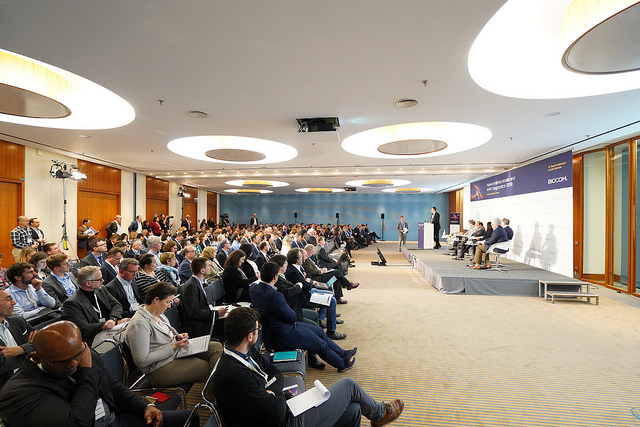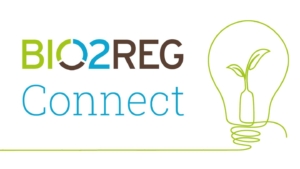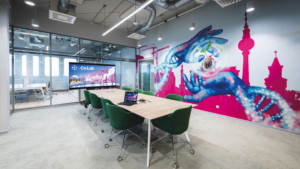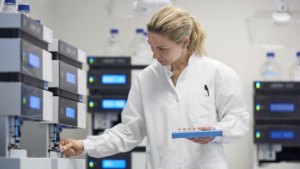
AMR Conference in Berlin: Call for better incentives
More than 330 experts joined the 2-day AMR Conference 2019 in Berlin. They called for rapid capital investments and economic incentives in the fight against antimicrobial resistance (AMR).
"We need the political willingness to put money on the table", said Peter Beyer, Senior Advisor at the World Health Organisation at the "Novel Antimicrobials and AMR Diagnostics 2019" conference in Berlin, which attracted around 330 stakeholders from SMEs and Big Pharma, the FDA, major global funding initiatives and financiers such as CARB-X, FIND, JPIAMR, GARDP, ENABLE or Novo’s REPAIR impact fund etc., as well as from applied sciences and national hubs. Only recently Germany announced to heavily invest into the global AMR accelerator CARB-X. "However, with regard to the entire value chain and R&D development, there is a lack of investment", confirmed Christoph Spennemann, UNCTAD/UN Legal Officer, during the policy sessions of the conference, pointing to current plannings at the WHO to bridge the funding gap by an AMR-focussed health impact investment fund (see article here). According to Aleks Engel from Novo REPAIR fund, the share value of antibiotics developers dropped by further 50% in 2018 despite a positive newsflow. For many stakeholders at the conference this reflects a failure in current antibiotics business models.
"We need to stop paying prices for antibiotics like for bubblegum", stressed Marc Gitzinger, VP at the BEAM Alliance, which represents the interest of 60 European SMEs and associated partners developing new antimicrobial compounds. Gitzinger who is also CEO of Swiss BioVersys welcomed the numerous funding initiatives that push antimicrobial R&D. However, he urged policy makers not to wait too long before establishing appropriate "pull" initiatives that incentivise developers, who stopped commercialisation of novel antibiotics in favour of drugs for chronic diseases that offer better profits, to return to the market. "All push mechanisms stop after Phase I", he said pointing to the post-Phase I-valley of death for the cash-strapped SMEs. "As 95% of innovation currently comes from SMEs we need funding mechanisms suited to their needs, otherwise we will sit in an empty room here in three years already" he added. Currently, only pharma companies MSD and Pfizer have remained in the US$42bn antimicrobial market, while Sanofi and Novartis spun out their R&D units last year. The planned AMR impact investment fund discussed by WHO aims to overcome this valley of death by providing enough money from governments and the industry to fund late stage clinical trials of novel antimicrobials even if no pull mechanism would be implemented in the next few years. How the set up of such a fund might look like and which financial models it is based on was discussed during a workshop with representatives from banks, insurance companies, VC investors and SMEs.
Anand Anandkumar, CEO of Indian biotech company Bugworks, made clear that the AMR problem is most pressing in the global South. In contrast to the US and Europe, where 25,000 and 33,000 patients, respectively, die annually due to AMR, in India it’s 58,000 babies alone. "We have to climb the Mt. Everest but just can see the base camp," Anandkumar said. Stakeholders at the conference told European Biotechnology that the countries that are most affected by AMR couldn’t afford new therapies. Denmark’s ICARS initiative (International Centre for Antimicrobial Resistance Solutions) seeks to bridge that gap by focussing on implementation research on the national level and addressing AMR both, in human and animal health, particularly in low and middle-income countries. This was pointed out by Robert Skov, Head of ICARS project team at the Statens Serum Institut.
Novel payment models as presented by NICE representatives in Berlin for novel last-resort antibiotics that decouple reimbursement from sales in order to slow down the time-to-resistance have been widely welcomed by the AMR community. However, they wouldn’t provide a solution for resource-poor or small countries. According to Enrico Baraldi, University of Uppsala, who analysed current push and pull mechanisms on behalf of the Swedish government, the most attractive model to incentivise antibiotic development for smaller national stakeholders would consist of R&D support as well as milestone payments related to steps in clinical development such as Phase I, II, III. These strategies would not only require smaller budgets from public stakeholders, but also be more beneficial for SMEs, emphasized Marie Petit from BEAM alliance.
In workshops, that discussed how to implement the WHO-led AMR innovation fund, it became clear that it could be a big challenge to bring different national governments under the umbrella of cross-financing a global solution, which would also cover third-world countries. The AMR impact investment fund, therefore, would possibly need financial input from private sources such as banks, insurance providers, further investors or pharma companies, whether active in AMR R&D or not. Big Pharma representatives told European Biotechnology that regulatory complexity and current pricing may hamper the development of targeted antibiotics, companion diagnostics and antimicrobial combination therapies. However, approaches to selectively kill pathogens while leaving the gut microbiome intact would be highly interesting, particularly as they would offer business opportunities in more lucrative indications that AMR such as autoimmune diseases or cancer and, though, could be used to cross-finance the development of anti-infectives.
Another topic highlighted at the AMR conference in Berlin: There is also a lack of approved diagnostics and treatments when infections become systemic, which affects 1.1 million people per year: even when high-tech symptomatic treatment is applied at intensive care units, 50% of sepsis patients currently die. As Achim Plum from Curetis highlighted that physicians today have to rely on empirical (broad spectrum) therapy, which is inadequate in 30 – 40% of cases and leads to massive overuse of our most precious antibiotics. "However, market development costs of novel solutions are widely underestimated and usually not sufficiently on the radar of VCs and public funding agencies", he stated. For this reason, numerous innovations are in R&D phase but if they ever reach the market is uncertain.
In animal health, which consumes approximately 50% of global antibiotics use, the challenge is to establish a pipeline of novel antibiotics, although many governments heavily restrict or even forbid the use, said Sven Arnouts from Ghent University. Currently, prevention strategies receive high interest from the public side. However, due to the mixed market picture, big animal health companies leave the field of antibiotics development. Other stakeholders such as Switzerland-based Stonehaven Incubate formed in 2018 are looking to find synergies between human and animal health. Its parent company, Stonehaven Holdings AG, was founded in 2015 by George Gunn, former CEO of Novartis Animal Health. "We try to identify innovative technologies in human health and work collaboratively to spin-out the technology to make them available for the animal health market", said Gwynneth Thomas at the conference. So far, Stonehaven Incubate has already evaluated dozens of solutions, among others German Lysando with which a strategic partnership was formed.
Next AMR conference is already scheduled for 12-13 March 2020 and will report the progress achieved.


 BIOCOM / aminul788 - Adobe Stock
BIOCOM / aminul788 - Adobe Stock Bayer Co.Lab
Bayer Co.Lab